Abstract
Dengue type 2 virus (DV) induces a suppressor pathway in mice which involves sequential participation of three subpopulations of T lymphocytes viz. Ts1, Ts2 and T3 cells. In the present study cyclophosphamide (CY) sensitivity of these cells have been investigated. The findings of the present study demonstrate that Ts1 and Ts2 cells are CY-insensitive while T3 cells are CY-sensitive. This supports our earlier conclusion that T3 may be the inducer cells of suppression.
Full text
PDF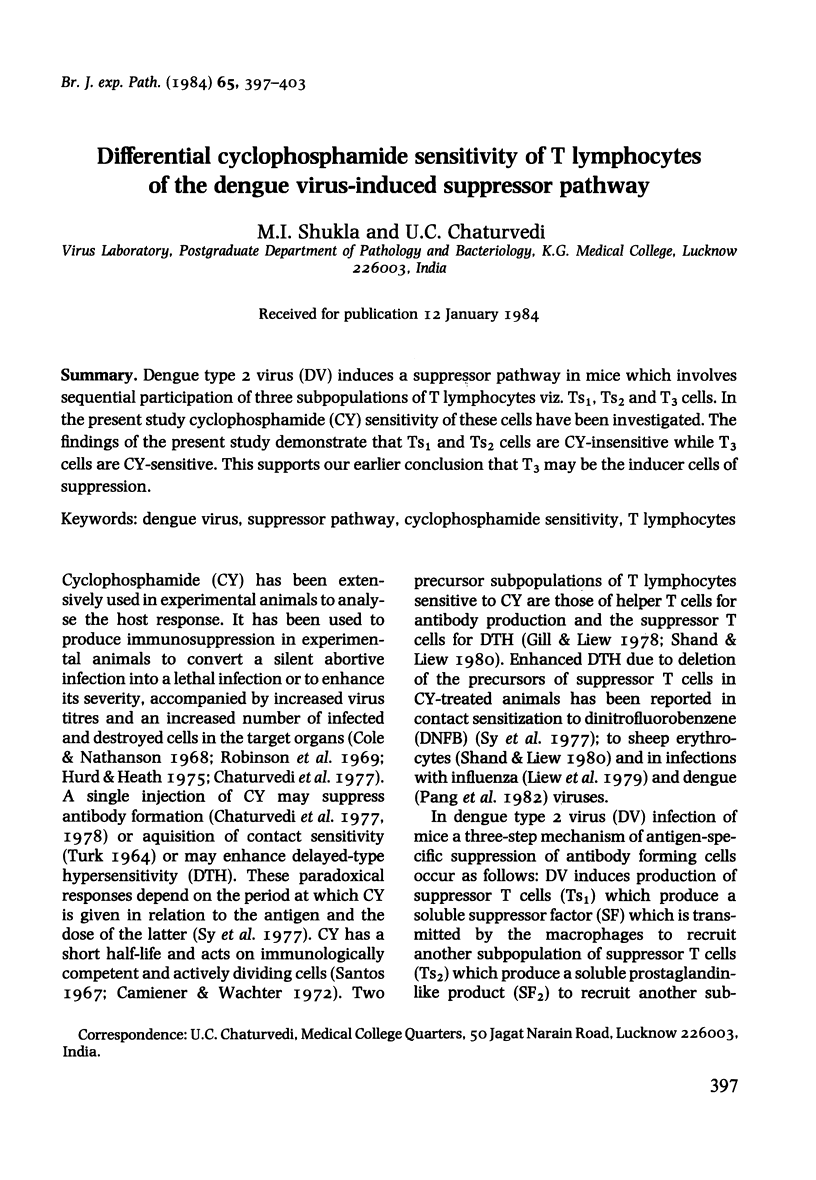
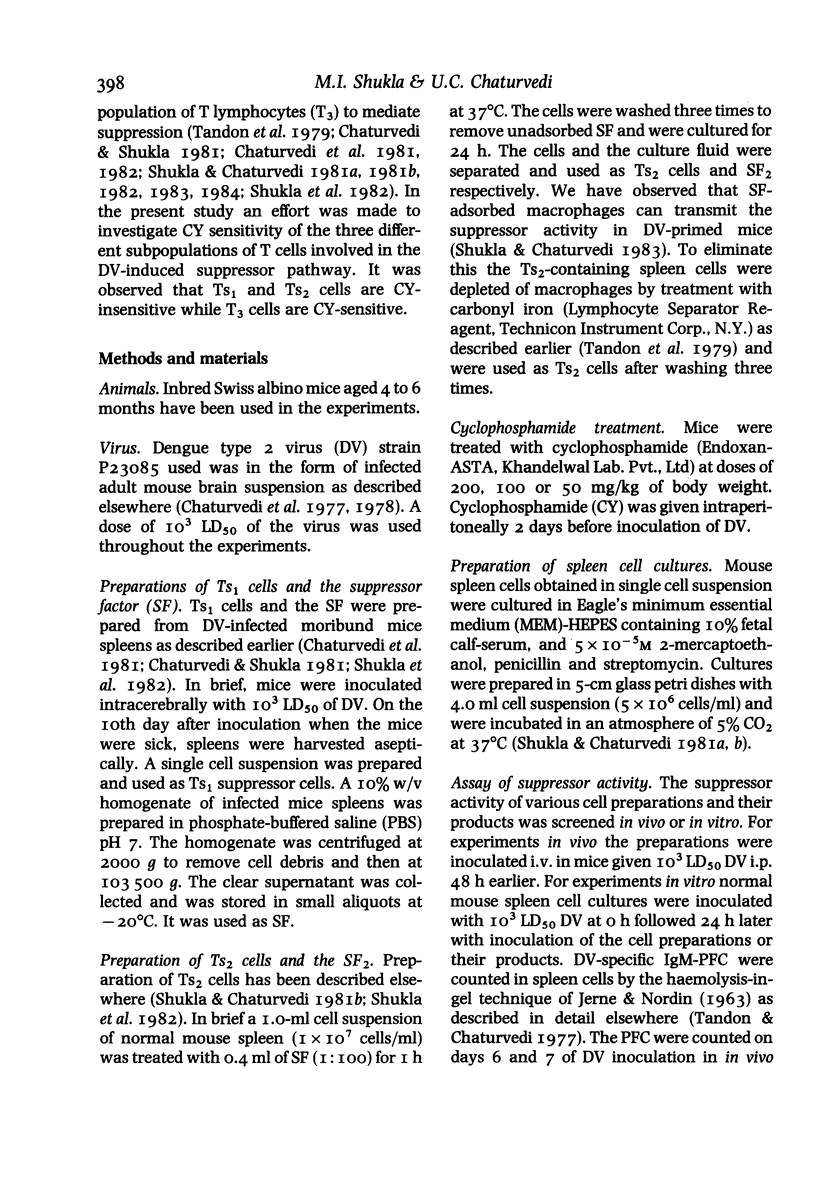
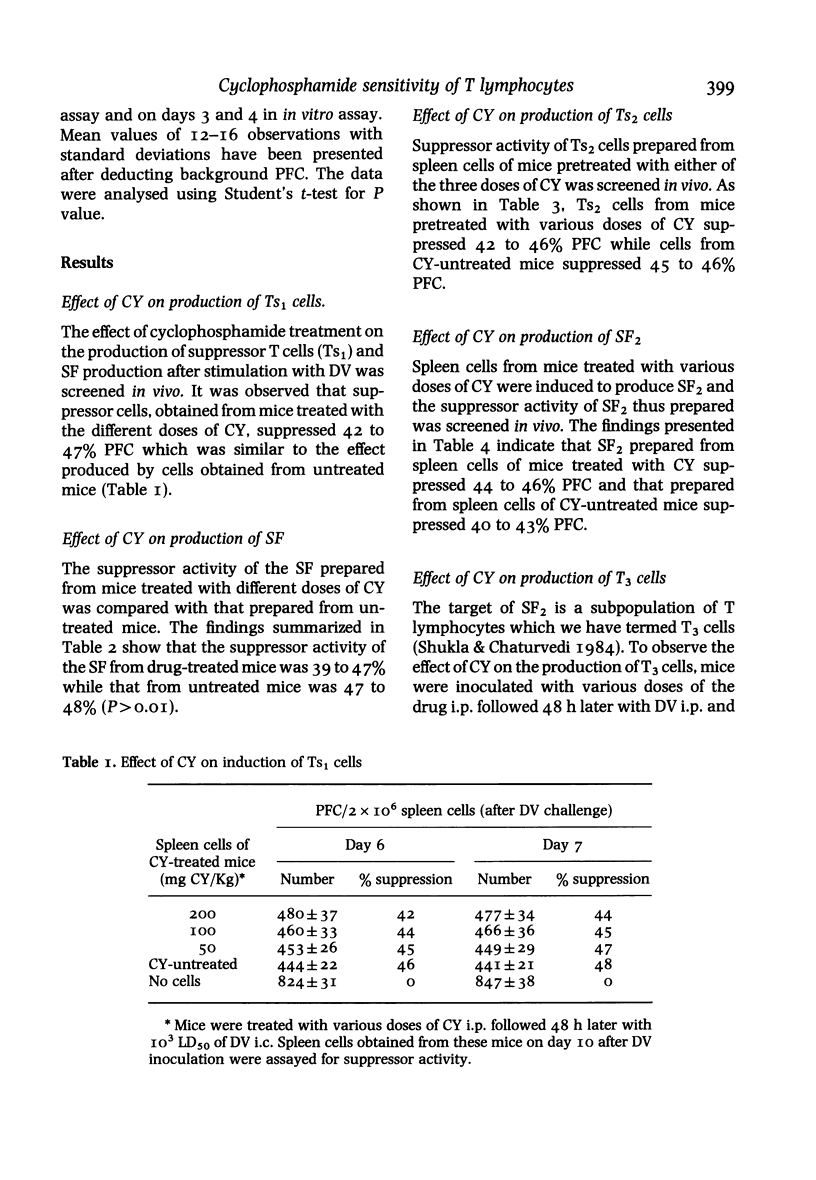
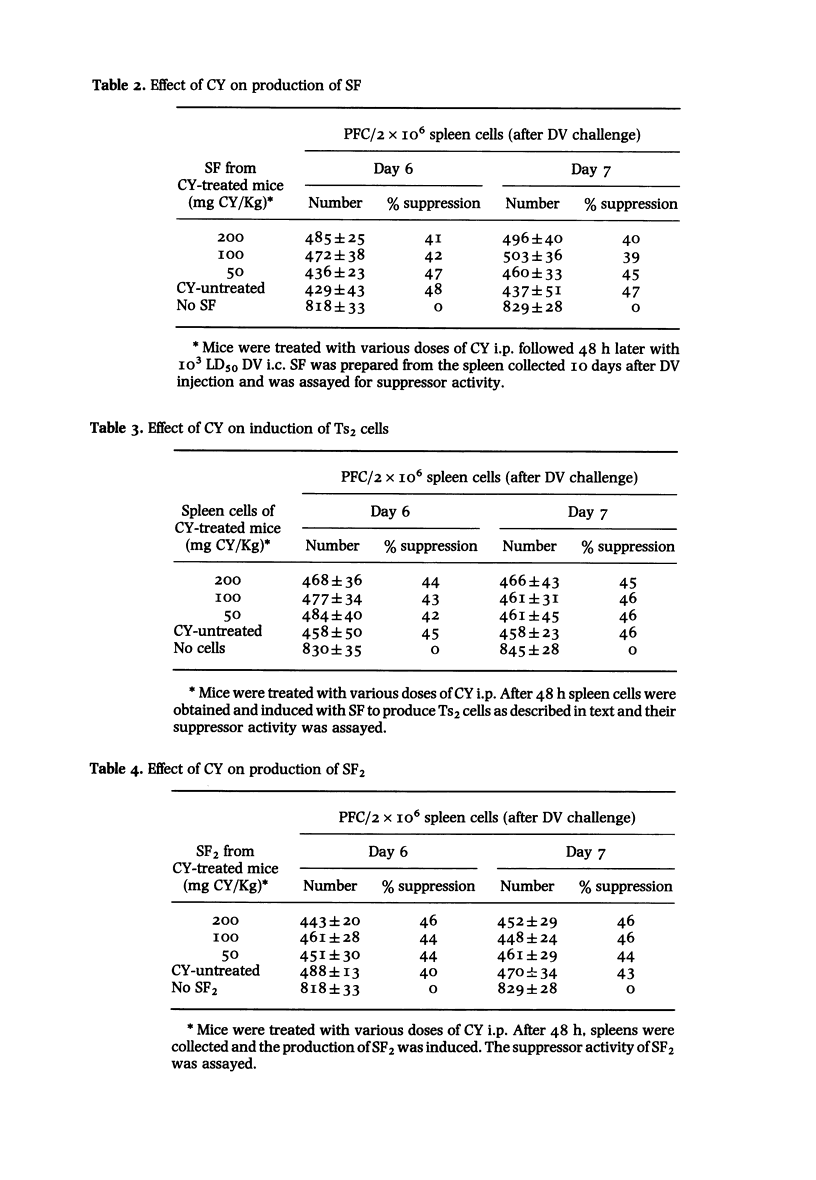

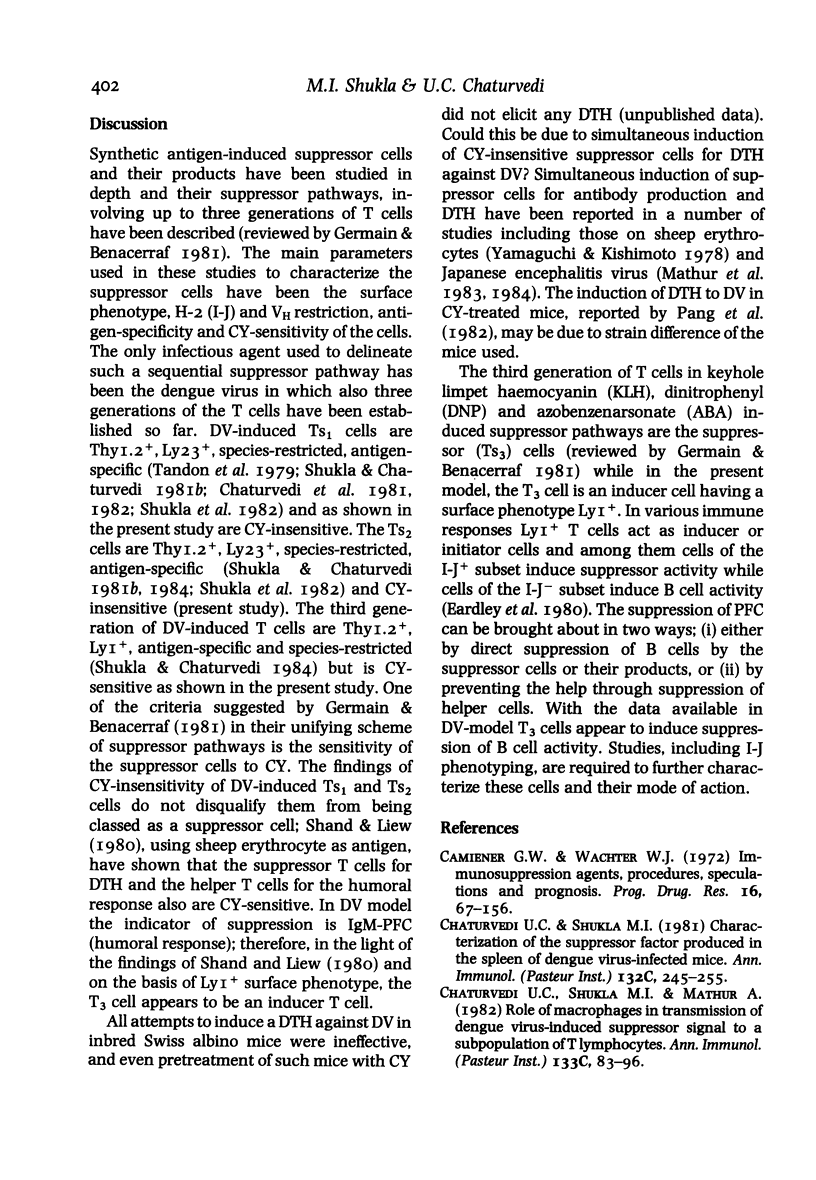
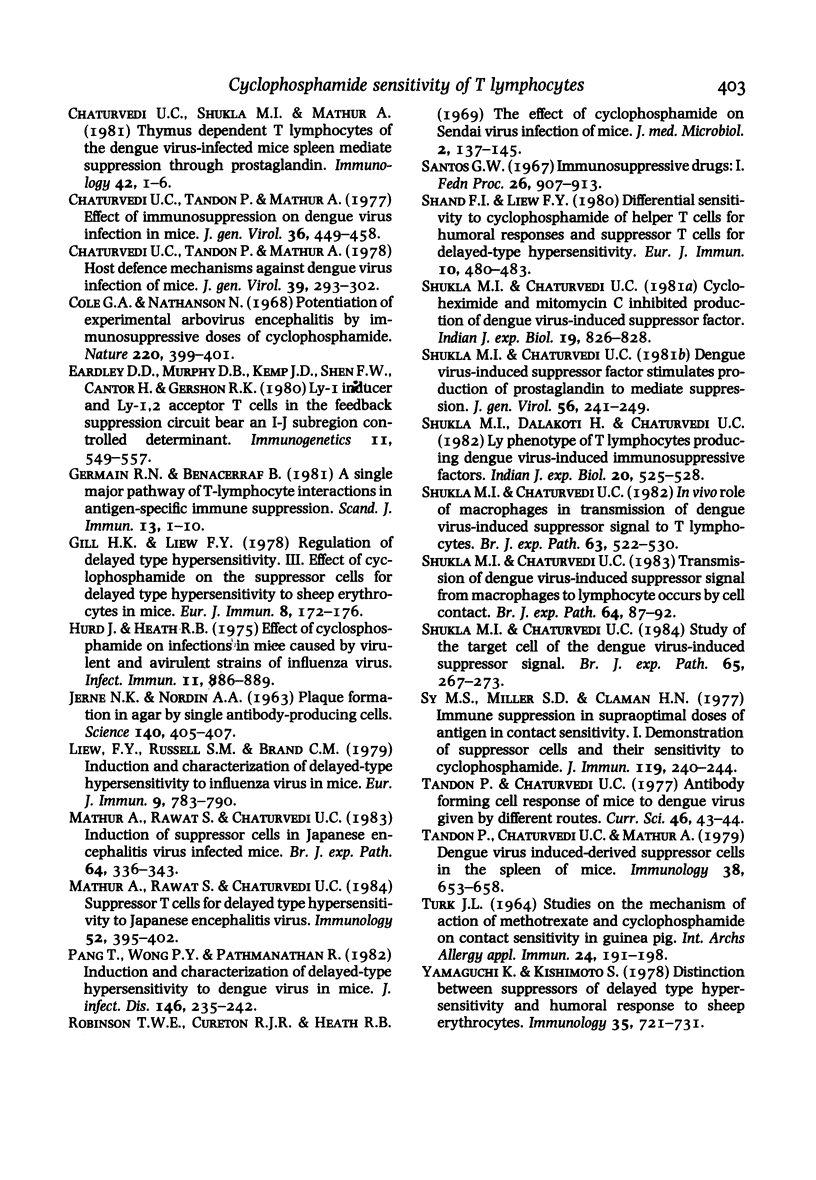
Selected References
These references are in PubMed. This may not be the complete list of references from this article.
- Camiener G. W., Wechter W. J. Immunosuppression--agents, procedures, speculations and prognosis. Prog Drug Res. 1972;16:67–156. doi: 10.1007/978-3-0348-7081-8_2. [DOI] [PubMed] [Google Scholar]
- Chaturvedi U. C., Shukla M. I., Mathur A. Thymus-dependent lymphocytes of dengue virus-infected mice spleens mediate suppression through prostaglandin. Immunology. 1981 Jan;42(1):1–6. [PMC free article] [PubMed] [Google Scholar]
- Chaturvedi U. C., Shukla M. I. [Characterization of the suppressor factor produced in the spleen of dengue virus-infected mice]. Ann Immunol (Paris) 1981 May-Jun;132C(3):245–255. doi: 10.1016/0769-2625(81)90075-1. [DOI] [PubMed] [Google Scholar]
- Chaturvedi U. C., Tandon P., Mathur A., Kumar A. Host defence mechanisms against dengue virus infection of mice. J Gen Virol. 1978 May;39(2):293–302. doi: 10.1099/0022-1317-39-2-293. [DOI] [PubMed] [Google Scholar]
- Liew F. Y., Russell S. M., Brand C. M. Induction and characterization of delayed-type hypersensitivity to influenza virus in mice. Eur J Immunol. 1979 Oct;9(10):783–790. doi: 10.1002/eji.1830091008. [DOI] [PubMed] [Google Scholar]
- Mathur A., Rawat S., Chaturvedi U. C. Induction of suppressor cells in Japanese encephalitis virus infected mice. Br J Exp Pathol. 1983 Jun;64(3):336–343. [PMC free article] [PubMed] [Google Scholar]
- Mathur A., Rawat S., Chaturvedi U. C. Suppressor T cells for delayed-type hypersensitivity to Japanese encephalitis virus. Immunology. 1984 Jul;52(3):395–402. [PMC free article] [PubMed] [Google Scholar]
- Pang T., Wong P. Y., Pathmanathan R. Induction and characterization of delayed-type hypersensitivity to dengue virus in mice. J Infect Dis. 1982 Aug;146(2):235–242. doi: 10.1093/infdis/146.2.235. [DOI] [PubMed] [Google Scholar]
- Robinson T. W., Cureton R. J., Heath R. B. The effect of cyclophosphamide on Sendai virus infection of mice. J Med Microbiol. 1969 May;2(2):137–145. doi: 10.1099/00222615-2-2-137. [DOI] [PubMed] [Google Scholar]
- Santos G. W. Symposium on immunosuppressive drugs. Immunosuppressive drugs. I. Fed Proc. 1967 May-Jun;26(3):907–913. [PubMed] [Google Scholar]
- Shukla M. I., Chaturvedi U. C. Study of the target cell of the dengue virus-induced suppressor signal. Br J Exp Pathol. 1984 Apr;65(2):267–273. [PMC free article] [PubMed] [Google Scholar]
- Shukla M. I., Chaturvedi U. C. Transmission of dengue virus-induced suppressor signal from macrophage to lymphocyte occurs by cell contact. Br J Exp Pathol. 1983 Feb;64(1):87–92. [PMC free article] [PubMed] [Google Scholar]


